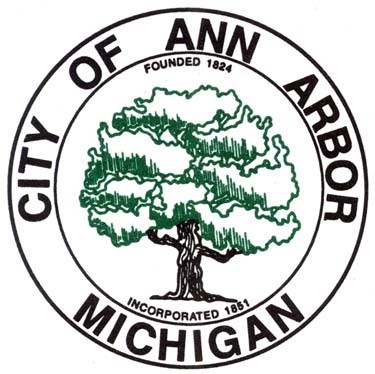Researchers will now be able to track migration patterns and behaviors of wildlife in Ann Arbor and (far) beyond. Ann Arbor Parks & Recreation has worked in cooperation with the Kalamazoo Nature Center (KNC) and the Kalamazoo Valley Bird Observatory (KVBO) to install a Motus Wildlife Tracking Tower at Huron Hills Golf Course (HHGC).
In 2021, KNC and KVBO were awarded a grant from the U.S. Fish and Wildlife Service to coordinate the installation of up to six grant-funded receivers and an additional four privately funded receivers on partnering properties throughout Michigan. These towers, also located around the Gulf of Mexico, in Central and South America as well as in Europe, can detect tagged wildlife passing within a radius of an antenna, prompting data to be sent to relevant researchers.
“The Kalamazoo Valley Bird Observatory, a project of the Kalamazoo Nature Center, works with bird observatories around the globe to gather data on bird migration routes using the Motus Wildlife Tracking System,” explained Jessica Simons, vice president for conservation stewardship at KNC. “We are proud the City of Ann Arbor has joined us as the 19th receiver in our statewide radio tracking network. With this addition, we now have a dedicated line of antennas from east to west across southern Michigan, which should allow us to track the movements of any tagged birds that are migrating north or south within the state.” Simons notes this provides the unprecedented ability to follow and understand the migratory patterns of a variety of species of conservation interest. Although the local installation effort is primarily focused on tracking migration of birds, other wildlife such as butterflies and bats can also be tracked by these antennas.
The tower installed at HHGC, near the sixth hole, fills the last gap in the local chain of towers and creates the opportunity for additional partnerships with local wildlife organizations, helpful to sustain tower operations into the future. “We are thrilled to be on the cutting edge of scientific research by joining organizations across Michigan in hosting a Motus Tower,” said Becky Hand, stewardship supervisor at the Natural Area Preservation division of Ann Arbor Parks & Recreation. “The data collected by our tower will help inform our management of Ann Arbor’s natural areas, so that we may provide high-quality habitat for all manner of local wildlife.” The tower at HHGC, active since Sept. 22, 2023, has already detected one state-threatened bird species (Eastern Whip-poor-will) and one state-endangered species (Kirtland’s Warbler).
Hand said the city hopes visitors to HHGC will take a moment to check out the tower and reflect on the critical role city parks play in providing valuable habitat, adding, “Golfers do not need worry — the tower will not interfere with play on the course.”
Find an annual report from KVBO at https://naturecenter.org/kvbo/. To learn more about how researchers worldwide use and share Motus data, visit http://motus.org/dashboard.








